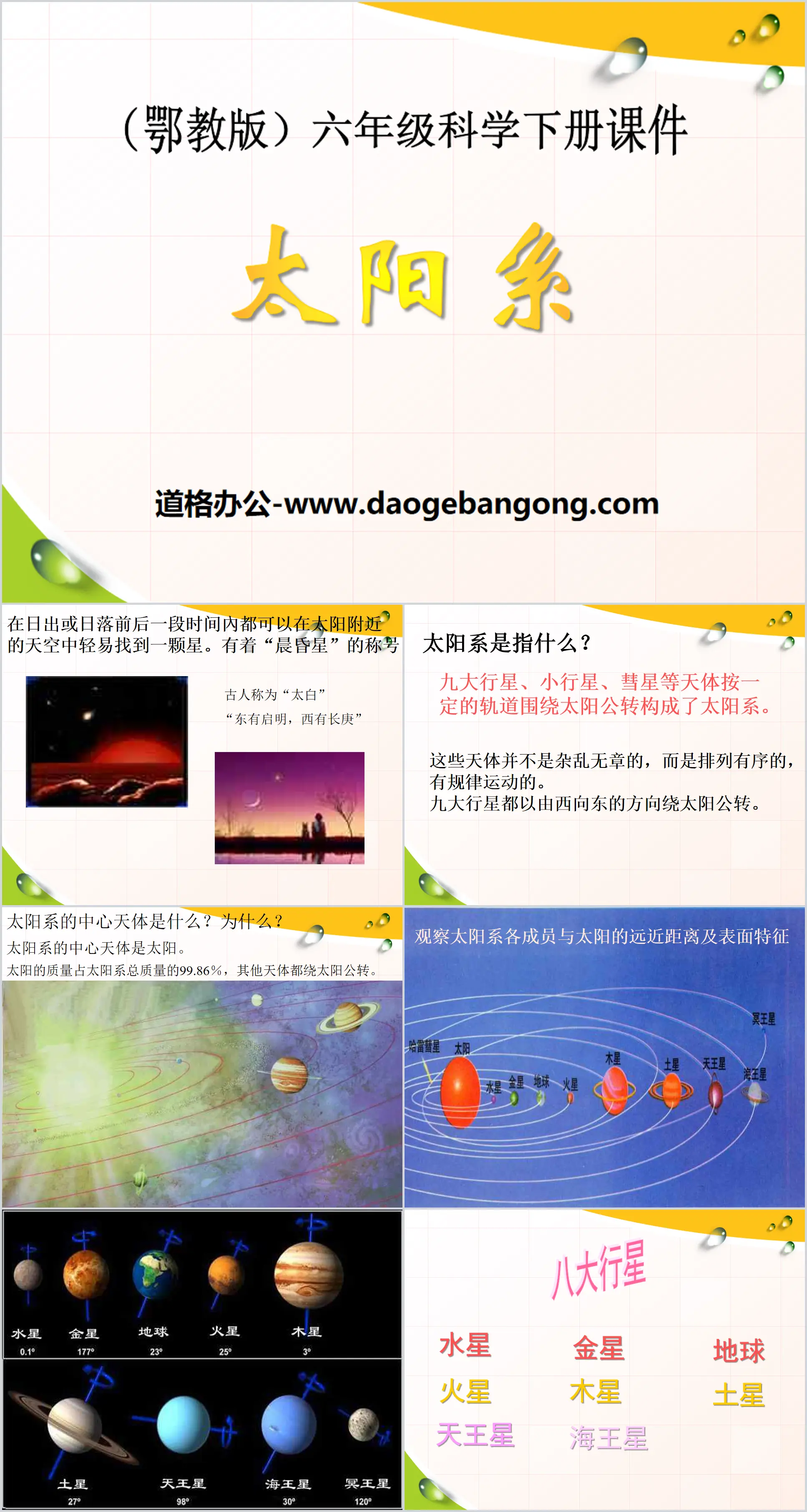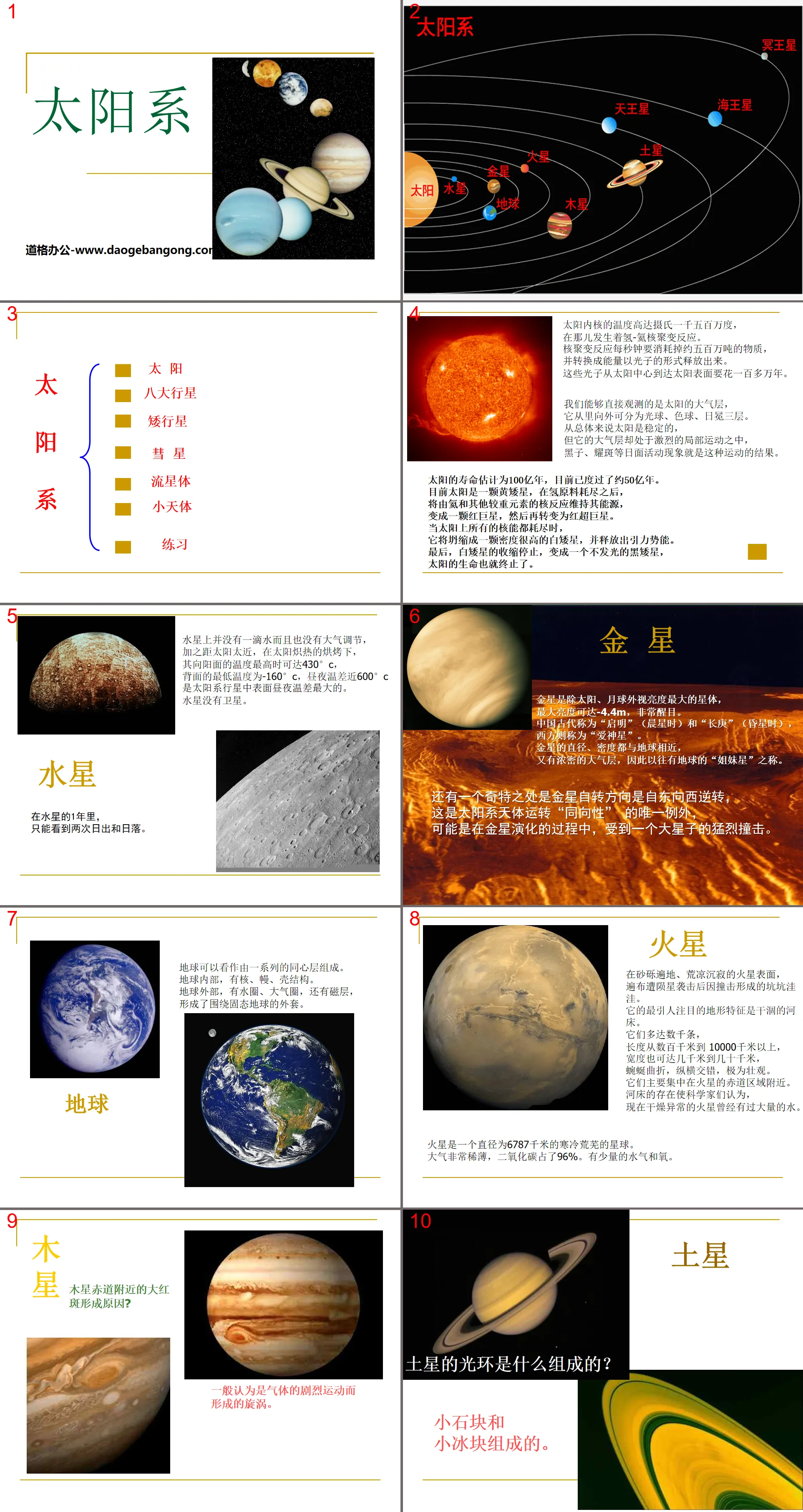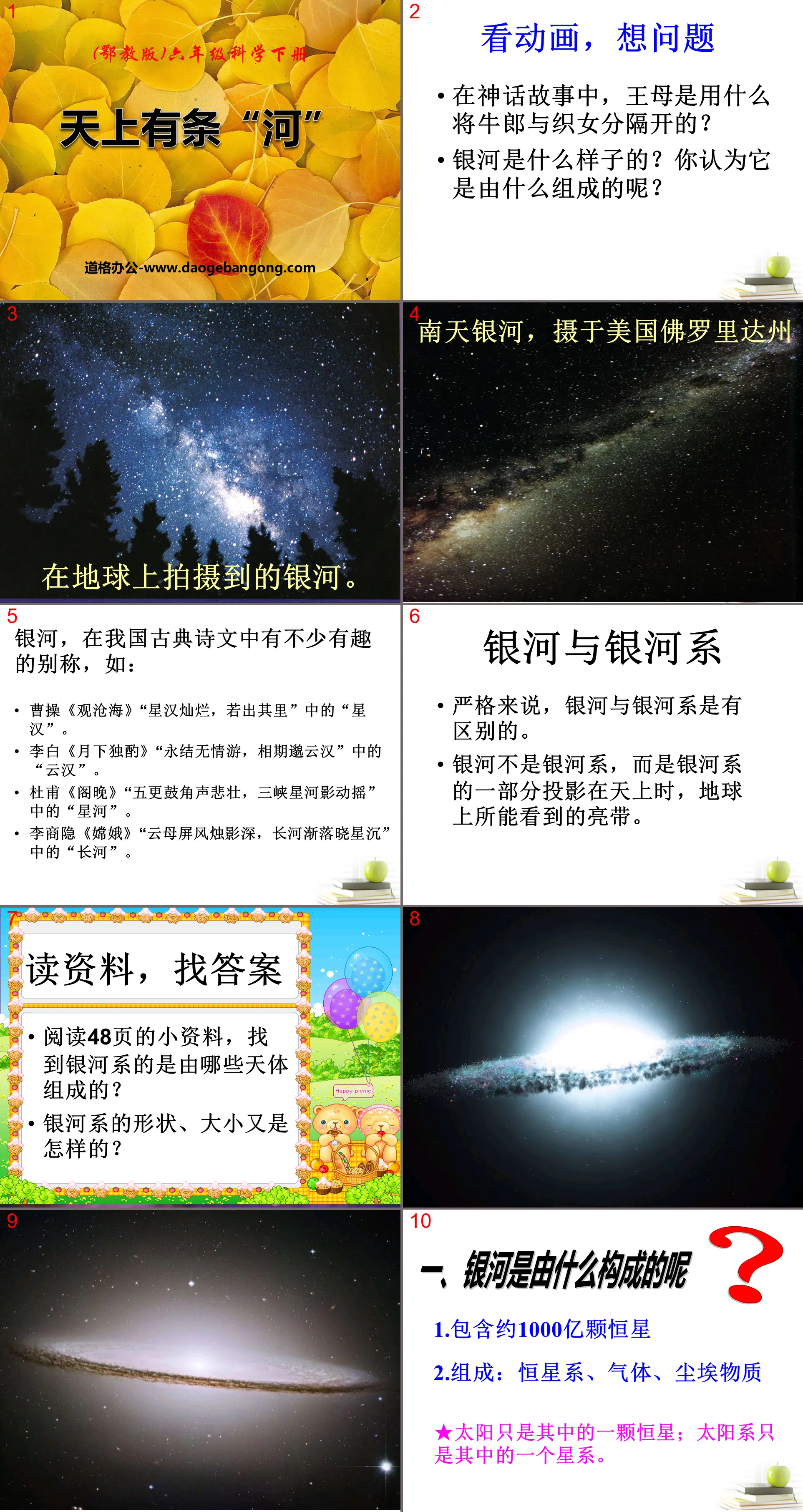"Solar System" PPT Courseware 3 Simple campus recruitment activity planning plan summary enterprise and institution recruitment publicity lecture PPT template is a general PPT template for business post competition provided by the manuscript PPT, simple campus recruitment activity planning plan summary enterprise and institution recruitment promotion Lecture PPT template, you can edit and modify the text and pictures in the source file by downloading the source file. If you want more exquisite business PPT templates, you can come to grid resource. Doug resource PPT, massive PPT template slide material download, we only make high-quality PPT templates!
| 文件名 如何下载使用 | 下载次数 | Download Points | 下载地址 |
|---|---|---|---|
| "Solar System" PPT Cours... | 1800次 | 0.00 | Free Download |
Tips: If you open the template and feel that it is not suitable for all your needs, you can search for related content "Solar System" PPT Courseware 3 is enough.
How to use the Windows system template
Directly decompress the file and use it with office or wps
How to use the Mac system template
Directly decompress the file and use it Office or wps can be used
Related reading
For more detailed PPT-related tutorials and font tutorials, you can view: Click to see
How to create a high-quality technological sense PPT? 4 ways to share the bottom of the box
Notice
Do not download in WeChat, Zhihu, QQ, built-in browsers, please use mobile browsers to download! If you are a mobile phone user, please download it on your computer!
1. The manuscript PPT is only for study and reference, please delete it 24 hours after downloading.
2. If the resource involves your legitimate rights and interests, delete it immediately.
3. Contact information: service@daogebangong.com
"Solar System" PPT Courseware 3, due to usage restrictions, it is only for personal study and reference use. For commercial use, please go to the relevant official website for authorization.
(Personal non-commercial use refers to the use of this font to complete the display of personal works, including but not limited to the design of personal papers, resumes, etc.)

Related reading
For more detailed PPT-related tutorials and font tutorials, you can view:Please click to see










Authoritative PPT Summary
"Solar System" PPT Courseware 3
What does solar system mean?
Nine major planets, asteroids, comets and other celestial bodies revolve around the sun in certain orbits to form the solar system.
These celestial bodies are not chaotic, but are arranged in an orderly manner and move regularly.
All nine planets orbit the sun from west to east.
What is the central object of the solar system? Why?
The central object of the solar system is the sun.
The mass of the sun accounts for 99.86% of the total mass of the solar system, and other celestial bodies orbit the sun.
1. What are the two largest planets in the solar system?
What are their greatest features?
The names of the two largest planets are: Jupiter and Saturn
They have common characteristics: a solid core and an atmosphere several kilometers thick, large size, many satellites, and a halo.
2. What is the brightest planet in the solar system?
Venus
3. Which planet in the solar system has the most satellites?
saturn
4. The asteroid belt is located between which two planets?
Mars and Jupiter
5. Briefly describe whether the eight planets have atmospheres and their characteristics.
meteoroid
some small solid pieces in the solar system
Meteors: When meteoroids approach the Earth's orbit, some are captured by the Earth's gravitational field. When they rush into the Earth's atmosphere, they burn with friction, producing a flash of light called a "meteor."
Meteoroids that have not burned up and fall to the earth's surface are called meteorites.
The reason why there is life on the earth is mainly due to the existence of the following conditions:
1. The earth is at a moderate distance from the sun, so that the temperature on the earth ranges from 0 degrees to 100 degrees. This is the temperature range in which water can exist in a liquid state. If the temperature is too high, more than one hundred degrees, the atoms cannot combine together to form molecules because the thermal disturbance is too strong. If the temperature is too low, the molecules will clump together tightly and can only exist in solid form, and living things cannot survive.
2. The size and mass of the earth are moderate. Give the planet an atmosphere suitable for life to breathe. If the planet's volume and mass are too large, its gravity is too strong, and its atmospheric pressure is too high, living things will not be able to adapt to survive. If the volume and mass are too small, its various gases will escape into space, making it difficult for an atmosphere to form. In addition, the atmosphere also needs various substances suitable for the formation of organisms, such as carbon, hydrogen, oxygen, nitrogen, etc.
Keywords: Solar system teaching courseware, E-education edition sixth grade science PPT courseware download for the second volume, sixth grade science slide courseware download, solar system PPT courseware download, .PPT format;
For more information about the "Solar System" PPT courseware, please click the Solar System ppt tag.
"Solar System" universe PPT teaching courseware:
"Solar System" Universe PPT teaching courseware Part One: Review of the previous section 1. When do solar and lunar eclipses generally occur in the lunar calendar? What moon phase? 2. What are the types of solar and lunar eclipses? 3. Try to explain the reasons for the solar eclipse in your own words. 4...
"Solar System" universe PPT download:
"Solar System" Universe PPT download Part 1: Introduction of new lessons In addition to the earth and the moon, what other celestial bodies do we know that are moving around the sun? What are the characteristics of these celestial bodies? How are they arranged? ... ... ... Solar system PPT, second...
"Solar System" Universe PPT:
"Solar System" Universe PPT Part 1 content: Understand that the solar system is centered on the sun, including the eight major planets that revolve around it (including satellites that revolve around the planets), dwarf planets, and small celestial bodies (including asteroids, meteors, comets, etc.) The system is called...